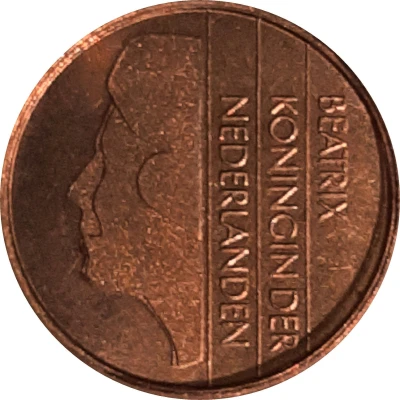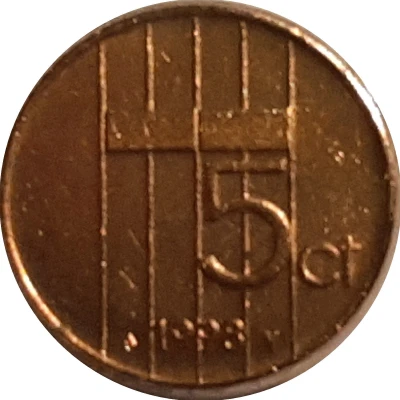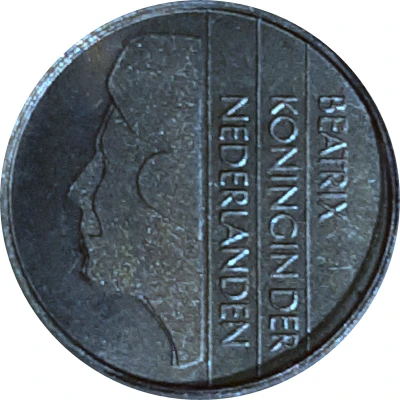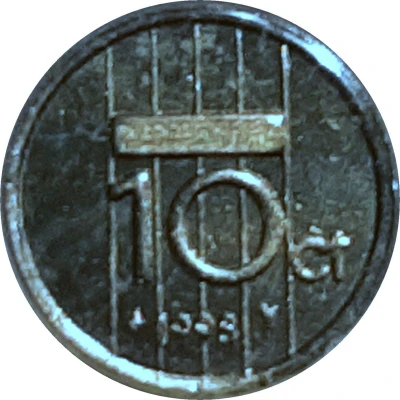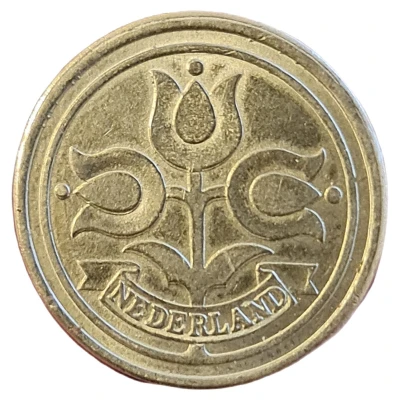
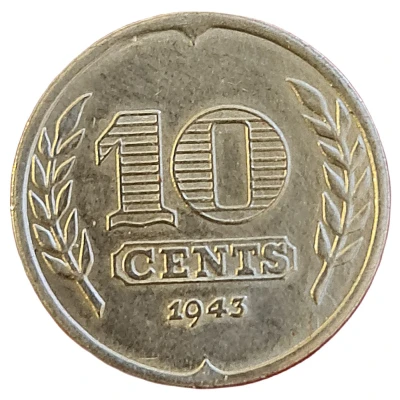

Replica - 10 Cents - German Occupation (Replica) ND
| Copper-nickel (Cu-Ni-Zn) | 5.61 g | 21.2 mm |
| Location | Netherlands |
|---|---|
| Type | Medals › Coin replicas |
| Value | 10 Cents 0.10 NLG = EUR 0.045 |
| Currency | Gulden (decimalized, 1817-2001) |
| Composition | Copper-nickel (Cu-Ni-Zn) |
| Weight | 5.61 g |
| Diameter | 21.2 mm |
| Thickness | 1.8 mm |
| Shape | Round |
| Technique | Milled |
| Orientation | Coin alignment ↑↓ |
| Updated | 2024-11-12 |
| Numista | N#363975 |
|---|---|
| Rarity index | 92% |
Reverse
Value and year between two branches.
Script: Latin
Lettering:
10
CENTS
1943
Designer: Nico de Haas
Edge
Plain
Comment
Certificate of Authenticity
Towards the end of the first year of the war it became clear that the occupying forces were preparing measures to withdraw the coins in circulation. In doing so, on the one hand, they hoped to banish the annoying memory of the House of Orange, which every coin brought with it. While by taking the solid pre-war coins, which consisted of bronze, copper/nickel and silver, they hoped to obtain a large amount of valuable raw materials for the war industry. This last objective was certainly not achieved, because only just under 8% of all coins in circulation were ultimately surrendered, despite the threat of heavy penalties.
The first coins to be replaced were the square nickels made of copper/nickel. The design of the new coins was assigned to Nico de Haas, editor of the weekly magazine 'Storm' of the Dutch SS. Because the higher coin values were replaced by notes, De Haas's assignment was limited to the denominations of 25 cents, 10 cents, 5 cents, 2½ cents and 1 cent. De Haas chose a number of 'original Dutch symbols' for his designs. After approval of the test pieces by the Secretary General of Finance on August 29, 1941, production began.
The Coins of Occupied Netherlands
After a number of designs were rejected, five coins were eventually put into circulation. All pieces are struck in copper-nickel-zinc.
- 25 cents. On the front a Viking ship on the high seas. The text NETHERLANDS at the top. On the reverse between two branches the value indication and the year.
- 10 cents. Three stylized tulips take a prominent place on the front. Below that on a ribbon THE NETHERLANDS. The reverse side has the same drawing as the quarter, but now with the indication 10 CENTS.
- The familiar square shape was chosen for the 5-cent piece. On the obverse two Saxon horse heads with a sun above them. The whole is placed in a square with the NETHERLANDS on a ribbon underneath. On the reverse the value indication within a ring with the year above and below. An ear of corn on the right and nine waves on the left.
- On the front of the 2½ cent piece a Frisian owl board. Above the NETHERLANDS. On the reverse the value indication with 4 waves and an ear of corn on the right. Below that on a band is the year.
- A right cross is placed in the center of the cent. Bottom center on a band THE NETHERLANDS. The reverse is stylistically identical to the 2½ cent piece, but now with the value indication 1 ct.
Guarantee
Specifications
These replicas of the Dutch zinc war money are true-to-life copies, struck in the coin metal copper-nickel-zinc.
Marcel Geertman,
The Mint Club
